Bicycling in Bogotá: Experiencing the good and not-so-good of one of the world’s top bicycling cities
Copenhagen, Vancouver and Bogotá, oh my! Our Bicycle Colorado team has been lucky to travel to three of the world’s top bicycling cities in just the last year. Piep and Jack visited Copenhagen (#1) this summer and I was fortunate to attend Rail~Volution in Vancouver (#18) and spend a week in Bogotá, Colombia (#12) this fall.
We were thrilled to hear from the City of Bogotá, which invited Bicycle Colorado to speak during their Bogotá Bike Design Fair that followed a larger Bike Week celebration. I spent the first half of my visit exploring the city on my own and through guided tours, including a leisurely group ride to an urban wetland and a nearly heartstopping 1-on-1 excursion with bike activist and “guerilla” guide Maikal who showed me all the local bikey hot spots. Then I shifted gears for the official part of my visit with the City, meeting with staff from different departments to learn about their efforts to increase biking. With a population of 8 million contained in 685 square miles by mountains to the east, this is no small task.
I came to Bogotá expecting a bicyclists’ paradise from its media attention and Mayor Enrique Peñalosa’s international reputation, but I left shocked at the dichotomy experienced by residents and visitors on bikes. Bikes—the vehicle itself, marketing and imagery—are everywhere and the City seems to invest a lot in programs and the industry, yet the biking experience from the perspective of a solo tourist is far from easy and pleasant.
Here’s a quick overview of the peaks and pits of bicycling in Bogotá:
- Ciclovíaaaa! – Most exciting was the famous Sunday ciclovía, when 75 miles of streets throughout the city, including lanes of major arterials and highways, are closed to cars and filled with Bogotanos of all ages and abilities walking, rolling and, of course, bicycling. After more than 40 years, this City-sponsored event has the process down to open streets for people at 7 a.m. and return them to drivers by 2 p.m. Compared to most cities in the States, Bogotá’s streets are bustling with people, but Sunday is a particularly active day with people taking advantage of the ciclovía for recreation and packing trails and parks.
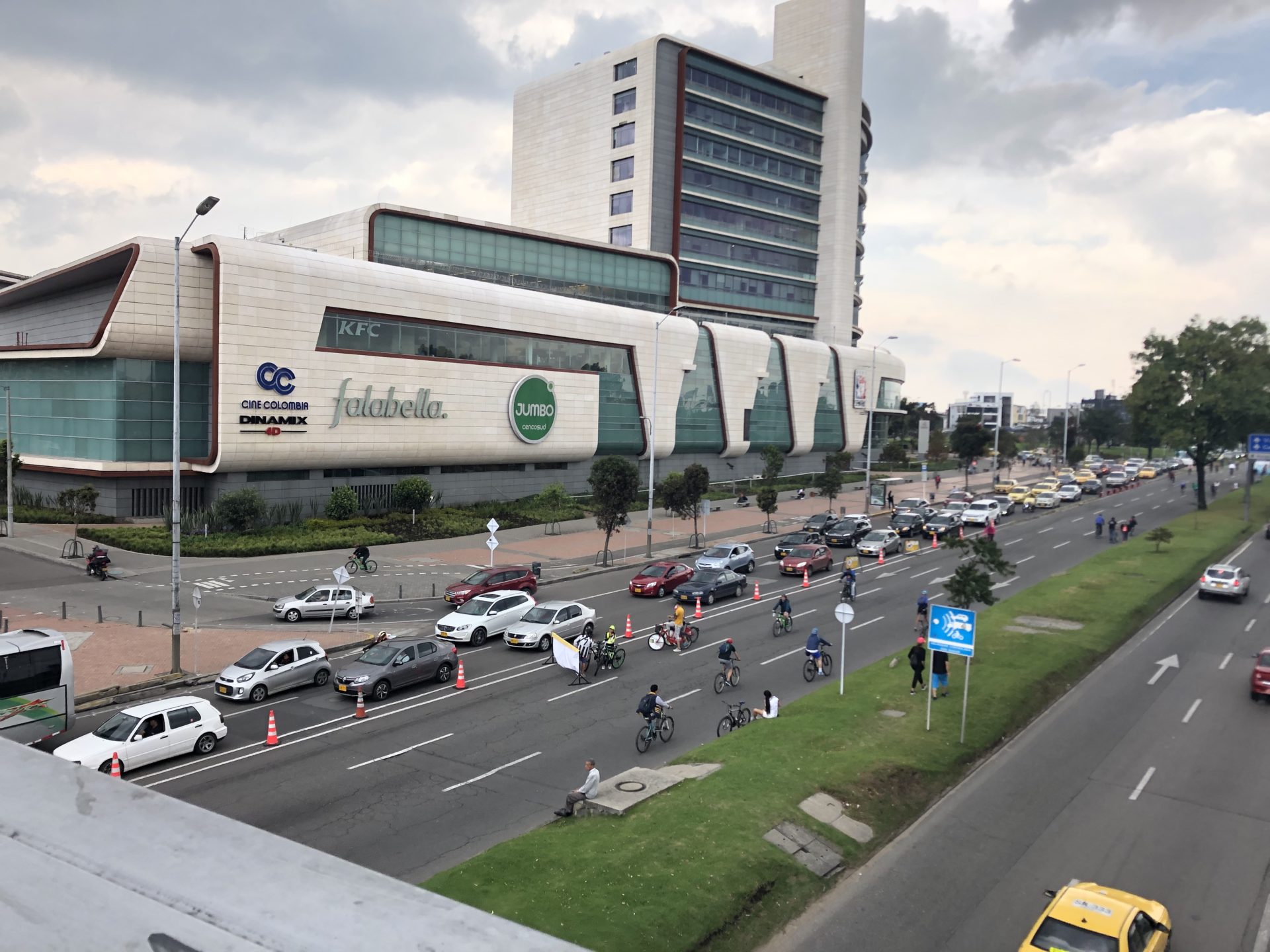
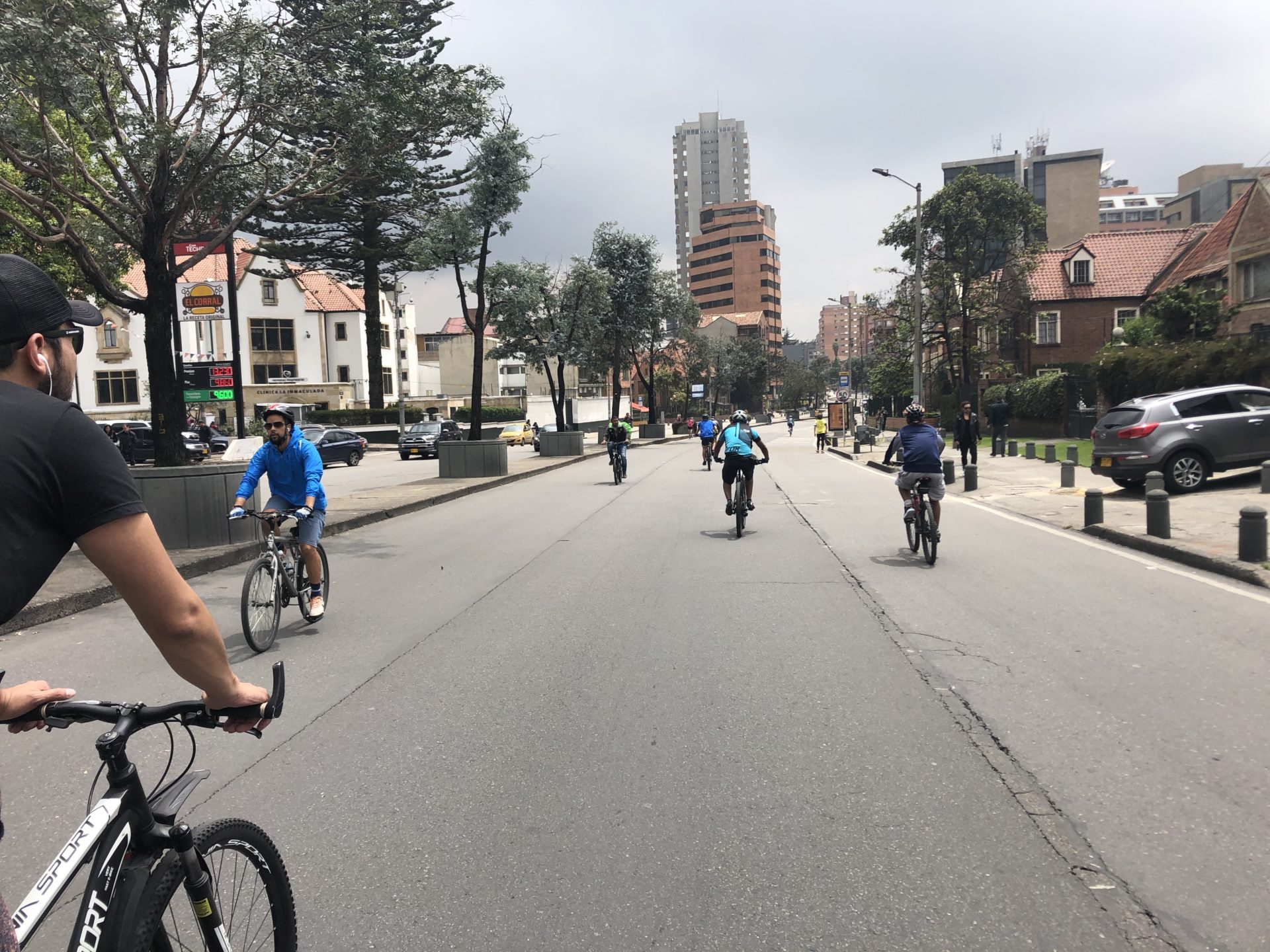
- Efficiency – Compared to the car and even the bus rapid transit lanes, bicycling is the most efficient and predictable form of transportation in Bogotá. People of all income levels choose riding a bike to have control over their commute. They are even choosing cargo bikes to get around with larger loads or children, and orange Rappi delivery backpacks (think Postmates) are all over the bike lanes and streets.
- Infrastructure – At least to a visitor from Denver, it feels cycletracks and bike trails are everywhere through the city and beyond, connecting metro Bogotá. The separated lanes, visible blue paint and vertical barriers provide comfortable space for people to ride. It seems you can access any part of the city with the number of pedestrian bridges across the most heavily-trafficked, multi-lane roads. (Note my hesitation to describe my experience as the reality and read below for more insight.)

- FREE bike education – The City provides an impressive number of free educational opportunities to residents and visitors. Mechanics can advance through three levels of courses at the “Centro de bici” to then take their skills to bike shops or on the streets dotted with temporary repair stations. The City escorts children on bikes to school through Safe Routes to School, kids and adults can sign up for free riding lessons at a handful of bike training parks across the city and residents or visitors can join bike tours around colorful local neighborhoods, mountains or urban green spaces, like my ride along a greenway to Juan Amarillo Wetland.
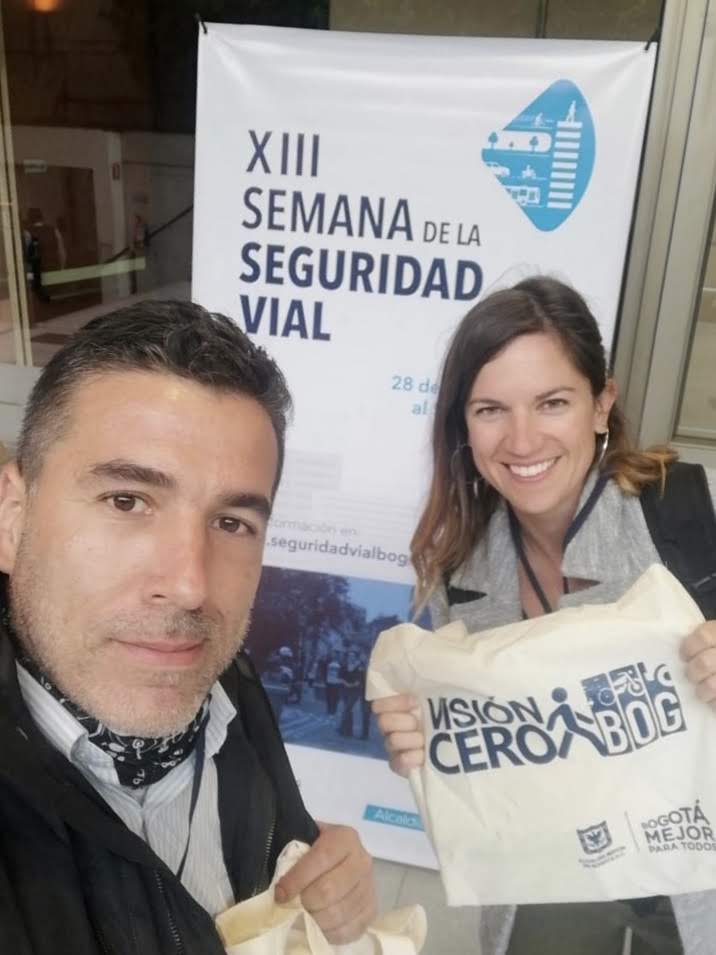
- City partnerships – Many departments—Recreation and Sports, Economic Development, Mobility—collaborate to build such robust bike programs and opportunities in Bogotá.
- Vision Zero – Like Denver, Bogotá has committed to Vision Zero to eliminate traffic fatalities. I dropped into a Vision Zero conference held at a local university where the City’s Bike Manager had presented and joined me for a conversation. This is where I really geeked out asking all kinds of questions about bike safety, infrastructure and local advocacy in Bogotá.
- Activistas – My guerilla guide Maikal knew everyone as we toured local cafes, bodegas, bike shops and even a barber shop for bike messengers. He talked a mile a minute, passionately explaining tactical urbanism strategies he and his fellow activists have used, countless bike clubs and grassroots cycling events that bring crowds of riders together.
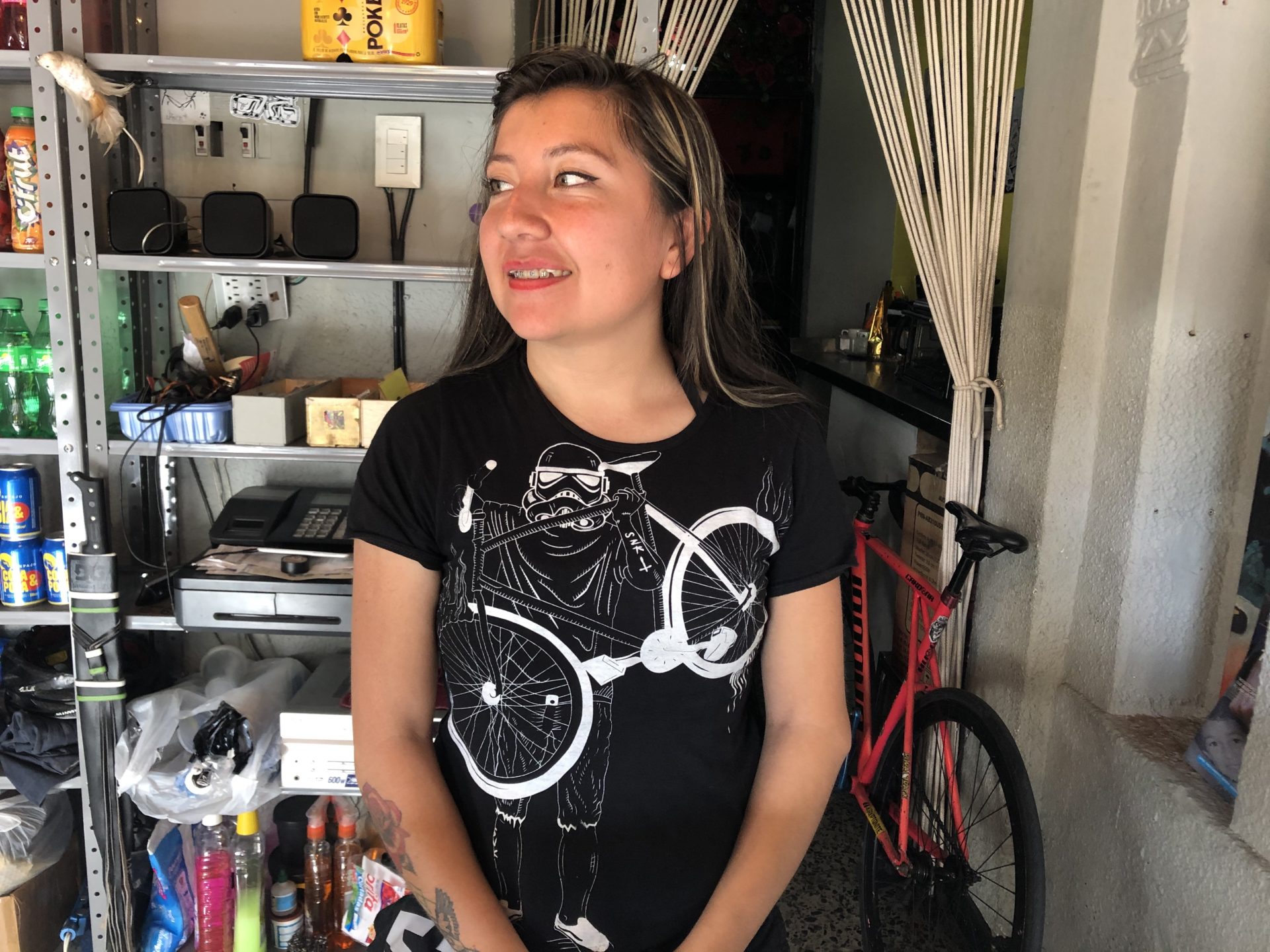
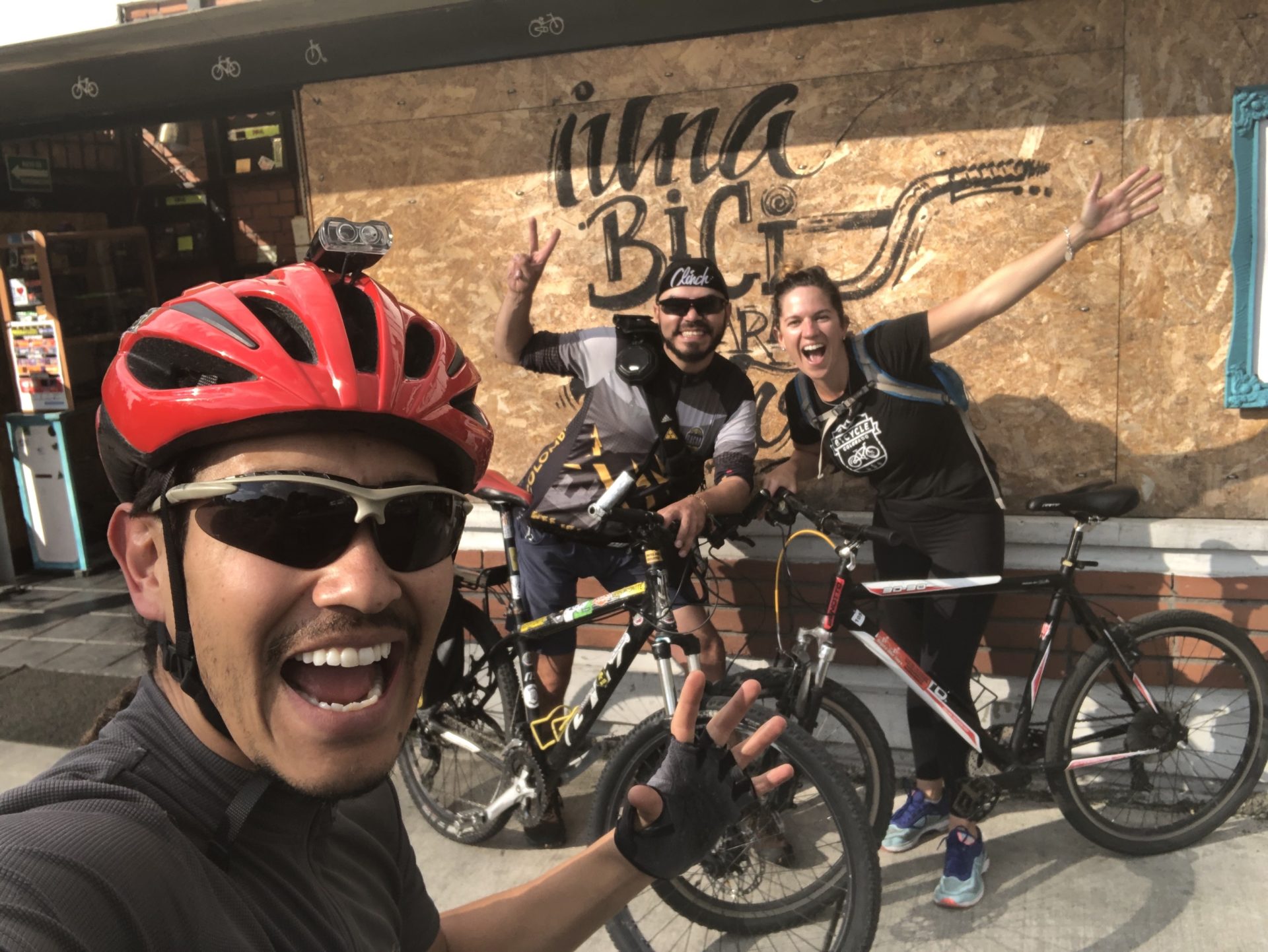
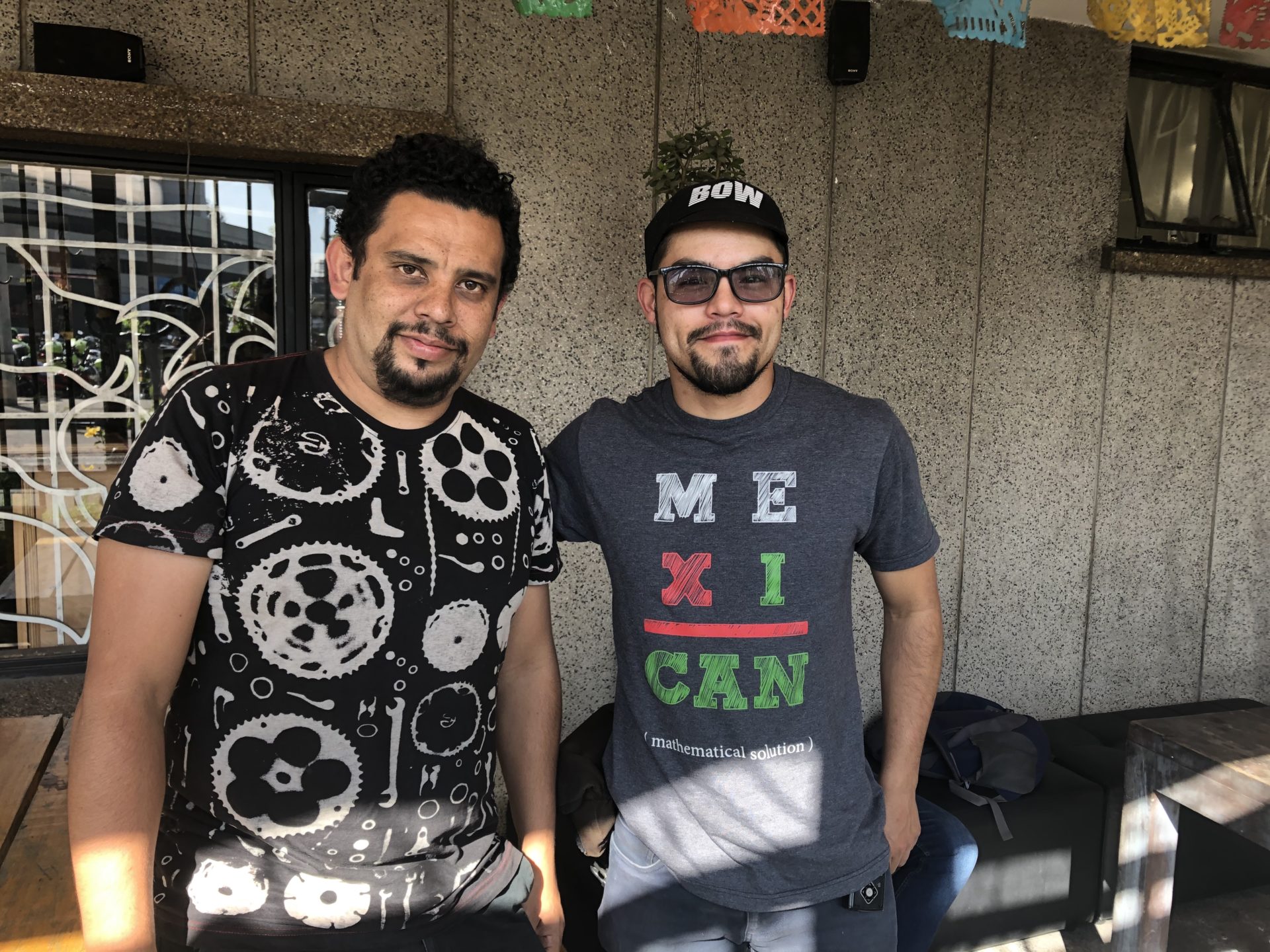
- Small bike businesses – Maikal knocked on unassuming doors and walked me up small warehouse stairs to meet talented entrepreneurs making top-quality bike bags and custom frames, as well as others managing a bike messenger network. Where are these entrepreneurs in Colorado? The Bogotá Bike Fair hosted another 15 or so small business owners and the City provides them with financial advising and support to grow their businesses.
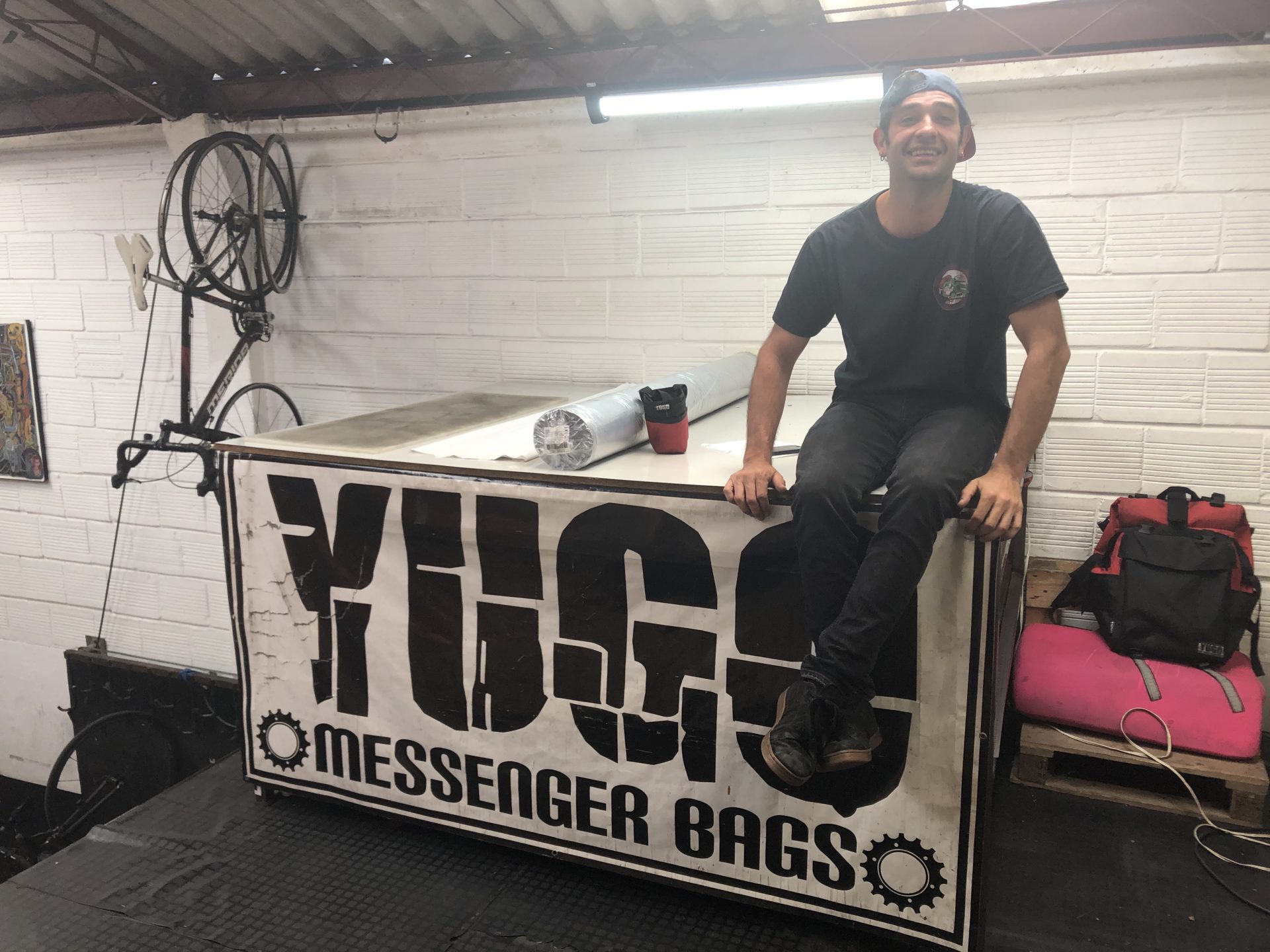
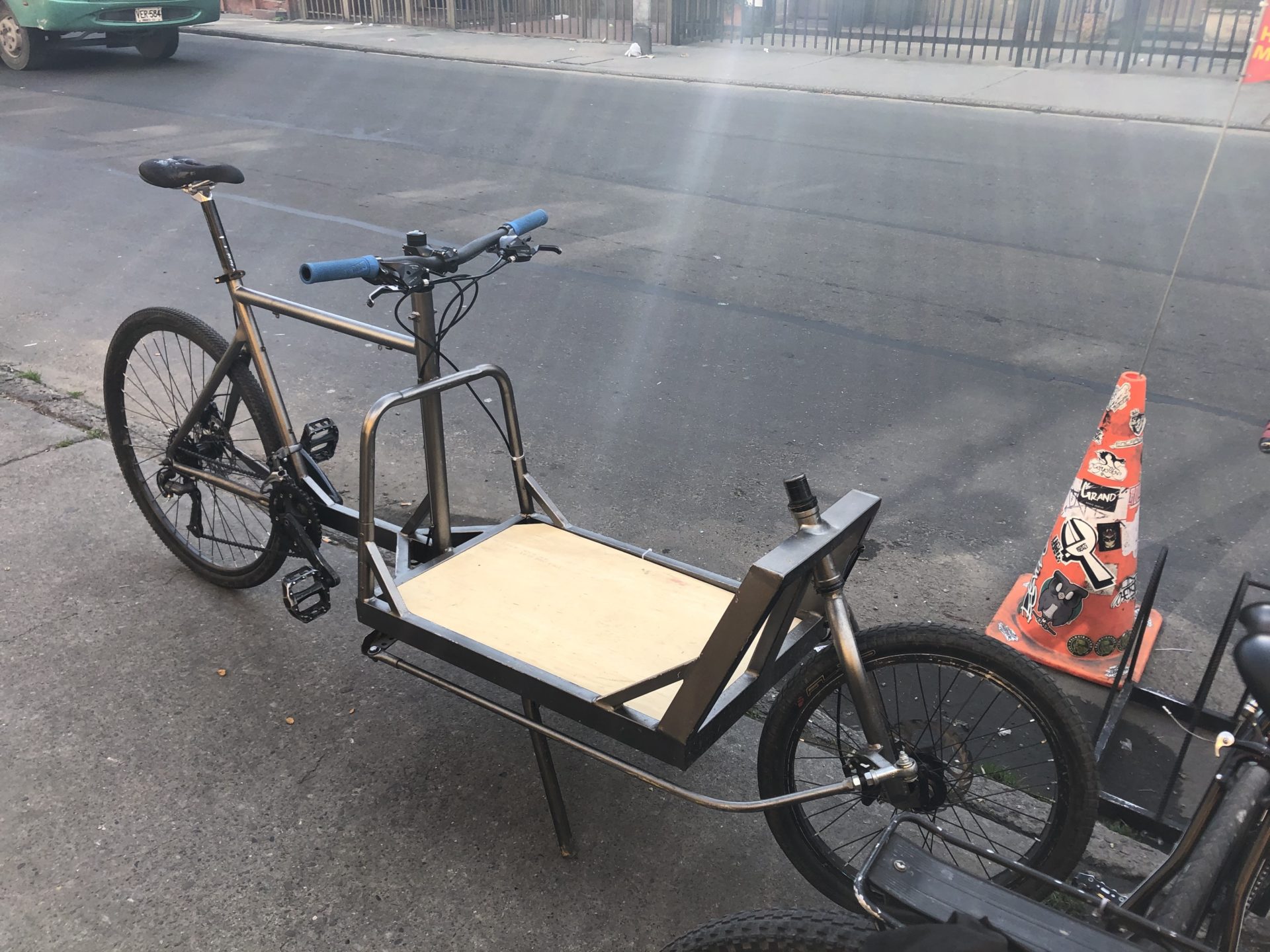
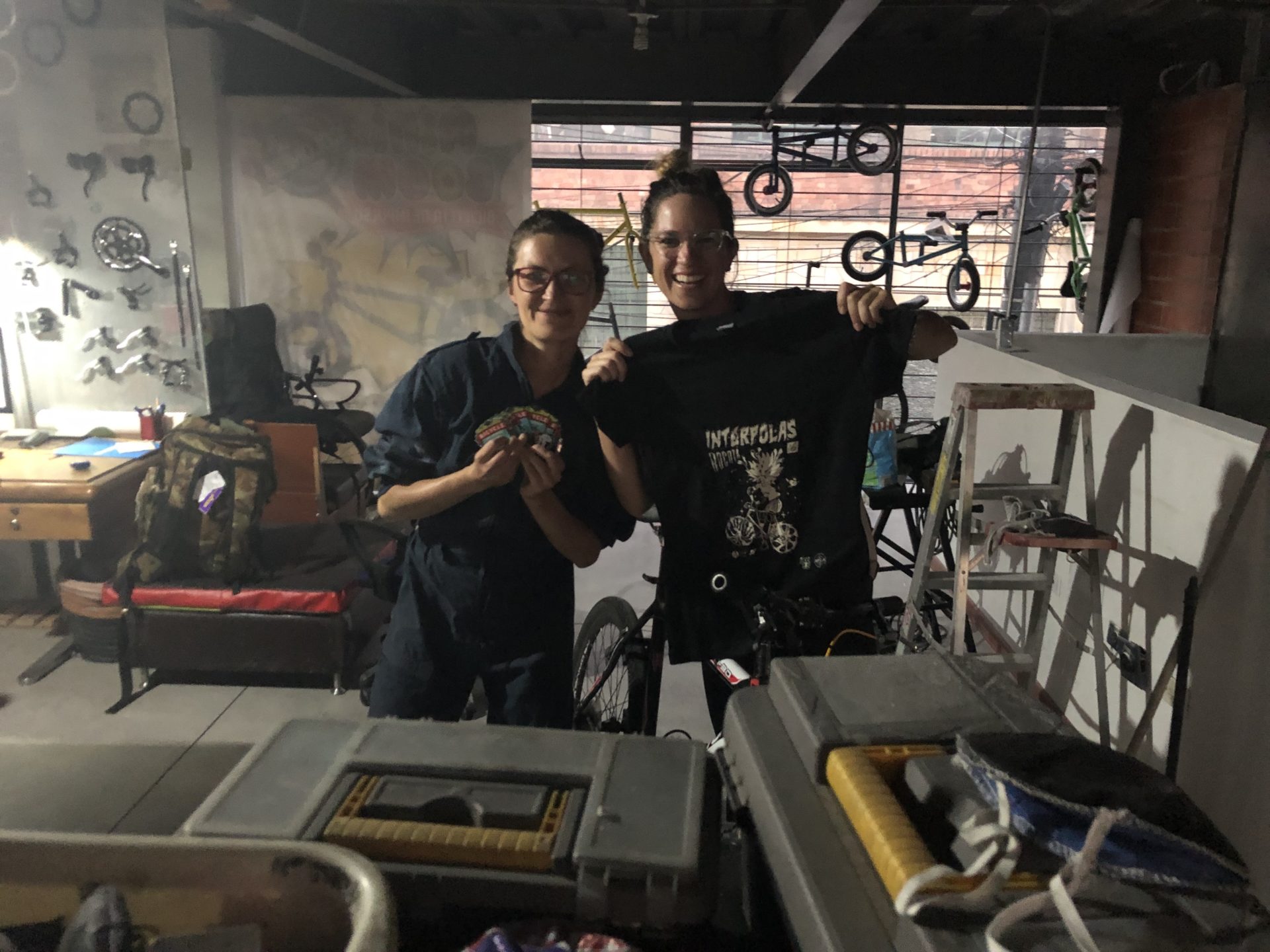
- A rainbow of riders – Bogotá has very strong bike communities within the broader bike community. You name the bicycling niche and they have it. Bike messengers, polo, BMX, mountain bikers … many riders I came across were extremely disappointed that I hadn’t visited the mountains just outside the city for some shredding.
Bogotá isn’t Copenhagen
- Public opinion – The local “activistas” in Bogotá disagree with the praise they get for being a bike-friendly city. They shared their frustration toward the current administration and city staff in how money is used, where bike projects are placed and lack of urgency around improving safety. Earlier this spring, the local bike community was heartbroken when one of their most active female leaders, Kat, was killed in a crash.
- Air quality – We talk about air quality in Denver, but I haven’t experienced anything like Bogotá. Sadly, I would not describe my walking and biking excursions through the city as refreshing. People travel the streets with scarves over their mouths and these face coverings are sold as a common accessory. The most blatant contributor is the traffic and outdated buses that belch black smoke. I heard many explanations of who is to blame for these polluting buses still on the roads and the other major factors contributing to poor air quality including the construction industry and geography.
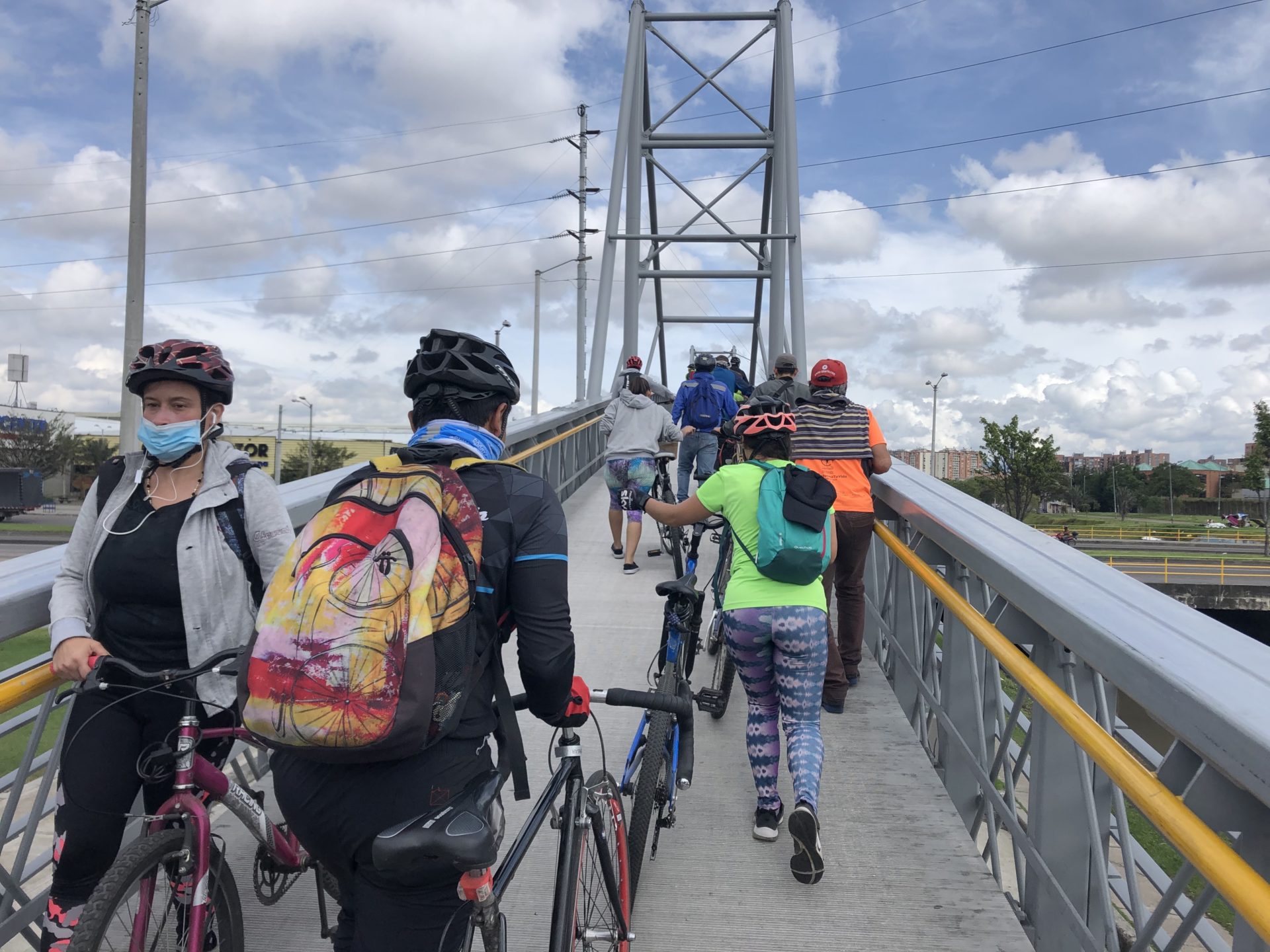
- Traffic – Despite the number of Bogotanos who ride bikes, traffic is rough. One day it took me 50 minutes to travel 6 miles in a taxi. It’s no wonder people choose biking, but the noise and exhaust really made it tough to enjoy a bike commute.

- Infrastructure – Bike infrastructure it isn’t always used. Some bike lanes are crowded by pedestrians, particularly those built into the sidewalk, and people are known to station themselves along these corridors to rob riders as they pass in crowded conditions. This is where you see bicyclists instead choosing the high-traffic streets, just barely squeezing between lanes of idling traffic or hopping the curb to get places faster. This was my experience shadowing a confident Maikal and, quite frankly, I was terrified. I also realize there are parts of town I didn’t get to like the southside that do not have such robust infrastructure. The City mentioned more projects are being built in lower income neighborhoods, but activists are still frustrated that these riders aren’t getting the same attention and resources to improve connections and safety as in the more affluent and commercial areas.
- Bikes – Before my visit, I did some research that included reading a report from Bloomberg with recommendations for Bogotá to improve its bicycle-destination status. One of these was to increase access to and quality of bikes. Bogotá’s economy limits this capital investment, particularly for local rental businesses which carry a rather clunky selection (but they made up for it with eagerness to tailor a tour experience and connect me with local bike culture!). As a city known for bicycling, I was surprised that there also were no docked or dockless systems, just some scattered dockless scooters. This option would have allowed me to travel more freely and made a huge difference in my visit. Instead, I needed to plan my bike days and carry a bike up to my apartment rental to store overnight. Fortunately, the City is completing a feasibility study to look into a public bike system.
- Wayfinding – Another Bloomberg recommendation I can confirm was wayfinding. Coming from Vancouver, where bike routes and destinations are clearly marked, I would be at a loss in Bogotá without my bike guides or at least checking my map every block. While it’s empowering to navigate a city solo, it can also become too much when the supports aren’t there.
I cannot say enough how much I enjoyed getting to know Bogotá, the kind people and their passion for bikes over my 10 days there. Locals were fascinated by the purpose of my trip and eager to impress me with Bogotá’s bike scene so, even on my vacation days, I couldn’t resist returning to work mode and learning more.
Everyone’s deep passion for bikes, the network of infrastructure and abundance of programming is what earns Bogotá its place in the top 20 bike cities worldwide. But don’t be surprised if, as a visitor, you find local support of Peñalosa lacking, bike access limited and some riding conditions too intimidating to feel comfortable getting out on your own. It’s impossible to compare Bogotá to any city in Colorado, even Denver—where Bogotá is a dense, heavily populated city bounded by mountains, Denver’s 600,000 people, wide streets and sprawl makes the comparison one of apples and oranges. But I left Bogotá grateful for what we have here, including the way our organization and residents can collaborate with government and agencies, and eager to make sure that what folks hear about a bicycle-friendly Colorado is the experience they have when they ride here.
Want to support our work to make Colorado a more bicycle-friendly place?
Become a member today!
Leave A COMMENT
Our twitter feed is unavailable right now.
The Latest News
view all- Feb 14, 2025
- by Benedict Wright
What Are Bike Lanes Good For?
By Benedict Wright, Bicycle Colorado Education Manager Are bike lanes a good idea? While the answer may be an obvious and intuitive “yes” for many bicyclists and even non-bicyclists, for some bike advocates the answer is not so simple. Some advocates argue that bike infrastructure—especially separated paths or lanes—is often counterproductive. Bicyclists…
- Advocacy Issues,
- Bike Education,
- Bike safety
- No Comments







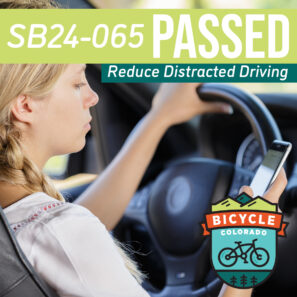
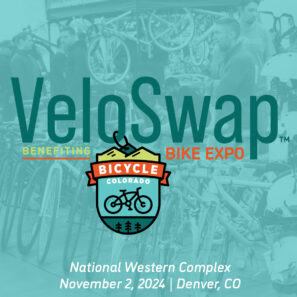
COMMENTS (1)
Gary Harty -
Great write up, Mo. Having a guide to begin seeing a new city is so helpful. I can relate to trying to orient myself with my phone every block. This is until the phone decides it is too cold and wants to take a time out.